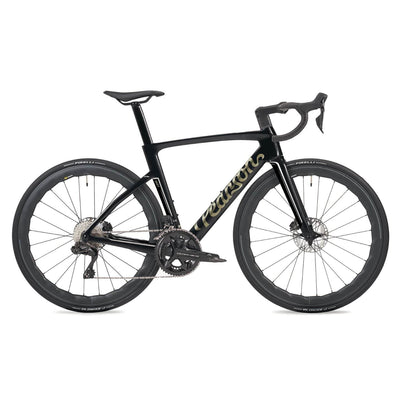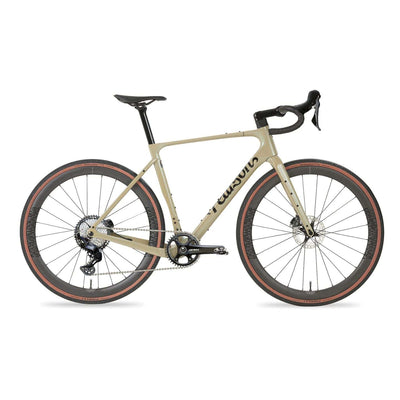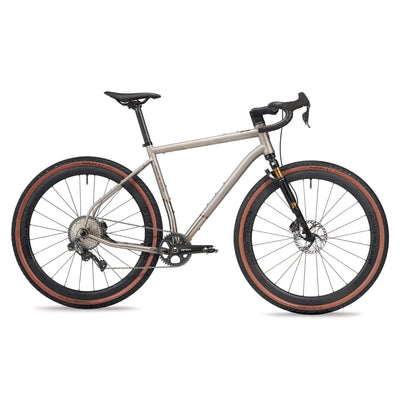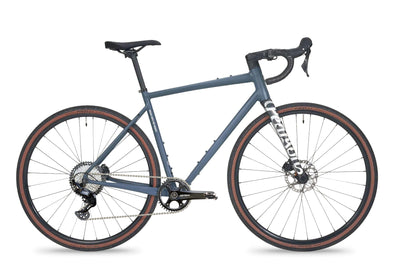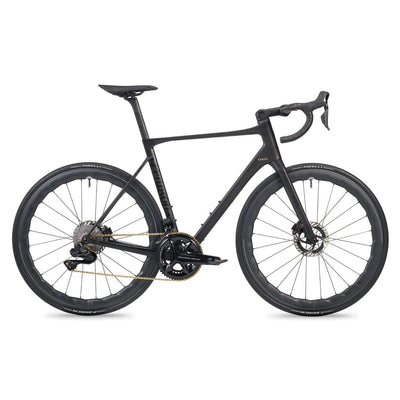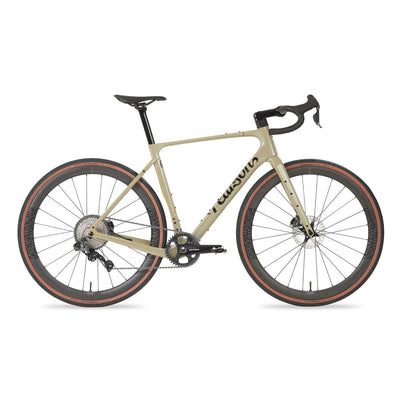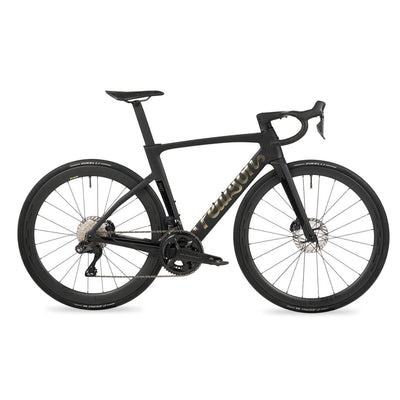Beginner's guide to the Tour de France
For a pro cyclist, the ultimate accolade is to be picked by their team to ride the Tour de France. But most will finish hours behind the eventual winner - if they finish at all. Here’s our beginner’s guide to the Tour de France, its route, the riders and the contenders.

The Tour de France is tough. This year’s race covers 3,404km (2,115 miles) spread across 21 stages with just two rest days.
In the 2022 Tour the winner, Dane Jonas Vingegaard, completed the 3,350km of the race in just under 80 hours - an average speed of over 40km/h and the fastest the Tour has ever been ridden. The slowest finisher, Caleb Ewan, was over five hours behind and of the 176 starters 41 dropped out before the end of the race in Paris.
The Route
This year, the Tour de France has had a bit of a shake up. It starts in Bilbao in Spain’s Basque Country and features four hilly stages before hitting the Pyrenees very early in the three week race.
A series of flat and lumpy stages bring the race, on Stage 9 on its second Sunday, to the Puy de Dôme one of its most famous climbs and scene of some epic face-offs in the past, but which hasn’t been used for 35 years after it was closed to vehicle traffic.
Further flat and lumpy stages bring the race, on Stage 13, on the Friday of its middle week, to a big summit finish on the Grand Colombier, the precursor to another series of climbing days in the Alps.
Another shock this year is the low number of time trial kilometres, where riders race individually against the clock. There are just 22.4km on Stage 16, on the Tuesday of the final week and just after the second rest day. They’re ridden at altitude and they include a final 10 per cent climb to almost 1,000m.

That’s followed by yet more climbing stages, with the penultimate Stage 20 on Saturday 22 July in the Vosges offering 3,500m of uphill culminating in a summit finish.
For years, the final stage has started in the outskirts of Paris, riding into the centre for laps of a finishing circuit on the Champs-Élysées. It’s a tradition that the race leader isn’t challenged on this stage, which starts with a processional ride with photo ops and the about-to-be race winner sipping champagne. The racing starts once the riders reach the Champs-Élysées, with a chance for the sprinters to gain the kudos of the final stage win.

The Teams

Each team will have a leader, although not all will be aiming for overall victory. There may also be other specialists in the team like a time trial expert or a sprinter, but the focus will be on the leader, with the balance of the team made up of riders there to help him meet his objectives - the domestiques.
There’s a big range in team budgets, with the best funded teams like Ineos Grenadiers and Jumbo-Visma tending to hoover up the top riders and dominating the overall competition. Less dominant teams will look for stage victories or their riders may feature in breakaways, where the smaller number of riders at the front of the race will ensure media coverage.

Races Within Races
General Classification contenders
The biggest prize is the race for the yellow jersey, worn by the overall race leader. The jersey almost always changes hands several times during the race.
The contenders for the overall race win, the General Classification or GC riders, may first show their colours in the Pyrenees on Stages 5 and 6. That leaves a long time to defend the yellow jersey though, so they may prefer to wait until the race reaches the Alps and let lesser contenders lead the race at this early stage.
GC riders have to be good at everything, but ability to climb and win high mountain stages is key to building a high overall position. Even with so little time trialling this year, they still need to be good time triallists - a poor race against the clock can see them drop down the overall standings.

Sprinters
Although the focus is on the overall race between the General Classification contenders, there’s considerable kudos to be gained from a stage win. Flatter stages with wide, flat finishes are usually the domain of the sprinters. Powerful riders, they can put out prodigious power numbers in the race for the line.

But they can usually only sustain that power for a short period, so they rely on a lead-out train of other riders from their team to bring them to the front of the race at the right point to unleash their final sprint. Some teams will be built around their sprinter, with Mark Cavendish being the master of the sprint stage for many years, helping him to rack up 34 stage victories over nine Tours de France, equalling Eddy Merckx’s record for the most stage wins. He’s riding the Tour for a last time and has one last opportunity to better that in this, his final year before retirement.
With high speeds and many riders jostling for position, sprint finishes are dangerous and it’s not uncommon to see mass pile-ups on the approach to the line. If a rider is caught up in a crash within 3km of the finish, race rules mean that he is given the same time as the bunch, so highly placed riders on general classification aren’t penalised.
Sprinters also have their own competition: the Points Classification with the leader wearing the green jersey. Points are awarded based on finishing position for the highest placed riders on flat stages, while all stages also have intermediate sprints where riders can pick up a smaller number of additional points.
Sprinters don’t fare so well on mountain stages and often they’ll retire from the race ahead of runs of high mountain stages if they’ve won a stage or two already. They’ll typically form a bunch, called the Autobus, and ride mountain stages together, way behind the stage leaders.
All stages have to be completed within a time limit, based on the stage winner's time though, so the straggling riders have to be careful to arrive at the stage finish inside this or they risk being eliminated.

Puncheurs
Another group of riders who aren’t good enough climbers to win the overall race but have an opportunity to win less mountainous stages are the puncheurs. They’re riders who can put out enough power to escape from the bunch or win the shorter uphill finishes typically found on stages early in the race and hilly stages mid-race.
They’ll often have the power to win out ahead of sprinters on trickier, less flat finishes too. A classic example is Peter Sagan, who has used his ability to win punchy finishes and intermediate sprints to win the points classification at seven Tours, as well as 12 stages.
He’s reaching the end of his career and his natural successors are Mathieu van de Poel and Wout van Aert. The latter is good at everything, which carried him to an early race lead in 2022 and the green jersey at the end of the 2022 Tour.

Climbers
There’s another competition for the climbers: the King of the Mountains, with the leader wearing the polka dot jersey. There will be designated climbs on road stages with the first few riders to the top gaining KOM points.
Climbs are graded from category 4 up to category 1, but a few of the largest climbs in the high mountains get an HC (Hors Categorie - beyond categorisation) rating. The points available differ with the categorisation.
Although often the domain of pure climbers, the GC winner may take the King of the Mountains competition on the way to overall victory - as Vingegaard did last year.
Domestiques
Meaning servant, domestique is a dismissive term for riders who will be highly competent in their own right to justify their inclusion in the team. But their ambitions will be suppressed in favour of the team leader.
Witness the second-placed finisher in the 2021 Tour, Jonas Vingegaard, who was a domestique for Jumbo-Visma’s leader Primož Roglič, before the latter retired following a crash.
In 2022, he vied with Roglič for the leader role in his team before Roglič retired and Vingegaard rode to the race win overall. He’s hot favourite to repeat his win this year, following a decisive victory at the Critérium du Dauphiné at the start of June.
Domestiques will help protect and position their leader and shepherd him through the race, bringing up water bottles and food and pacing him back to the bunch if he has a crash, a puncture or a mechanical problem. They’ll also help set the pace by riding at the front of the bunch when needed.
Some domestiques will have specialist roles too. GC contenders will typically have a number of climbing domestiques who can stay with them, provide assistance and help set the pace in the high mountains and potentially win stages themselves. Sprint teams will have domestiques who can form a lead-out train for their sprinter leader.

The Contenders
As mentioned above, Vingegaard looks to be in spectacular form coming into the race. His main competitor last year and the winner in 2020 and 2021, Tadej Pogačar, crashed at the Liège-Bastogne-Liège one day race in April, fractured his wrist and has been out of competition for most of the time since.

Don’t write Pogačar off though. He’s a tough competitor, modern sports science and training methods can make up for a lack of racing, and he is likely to use the first week or so of the Tour to get back into peak form. He’s a dark horse for a potential comeback.
Many Tours bring up some surprise contenders, whose heroic performances put them up there as a candidate for the overall win. Although often they’ll have a poor stage and drop back towards the end of the race, they may wear the yellow jersey and dominate the headlines mid-race.
In 2019 Julian Alaphilippe wore yellow for a total of 14 stages before losing the race lead to eventual winner Egan Bernal on stage 19. His run in yellow was reminiscent of Thomas Voeckler’s run of 10 stages in yellow in 2011. A similar feat might be repeated this year by a rider who gets in a breakaway on one of the early stages.
The Tour is always full of surprises.


